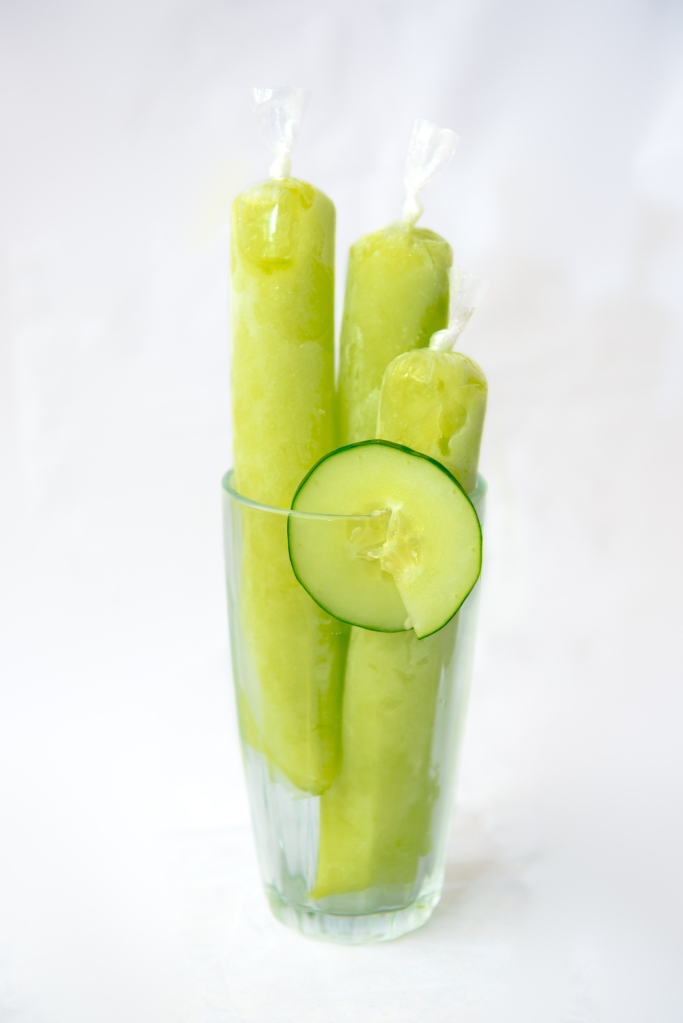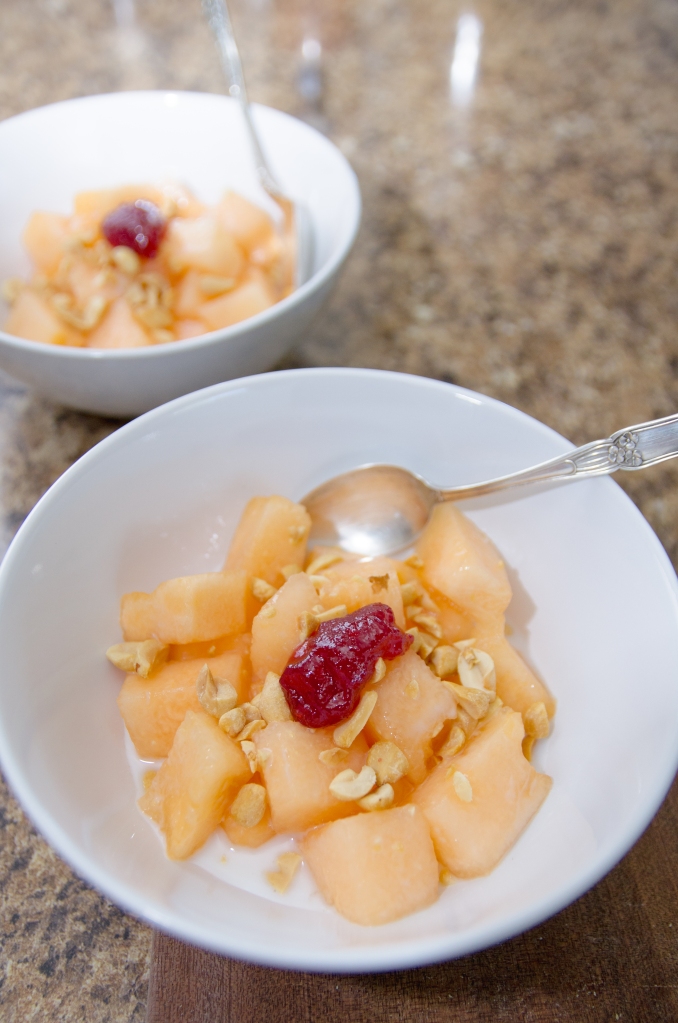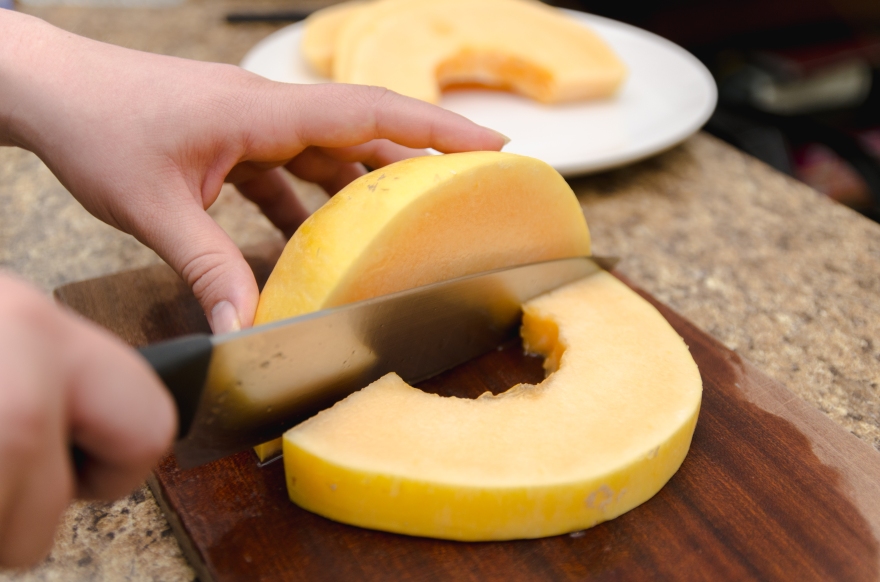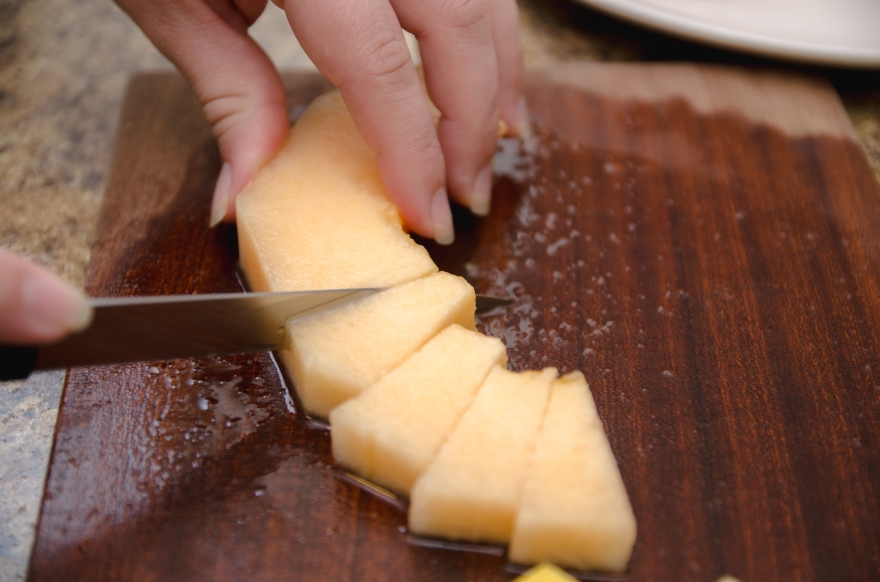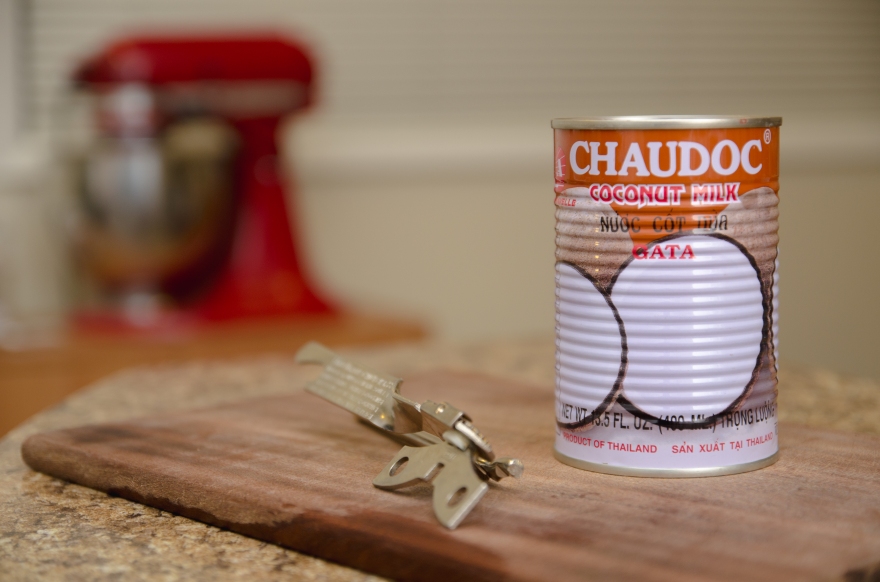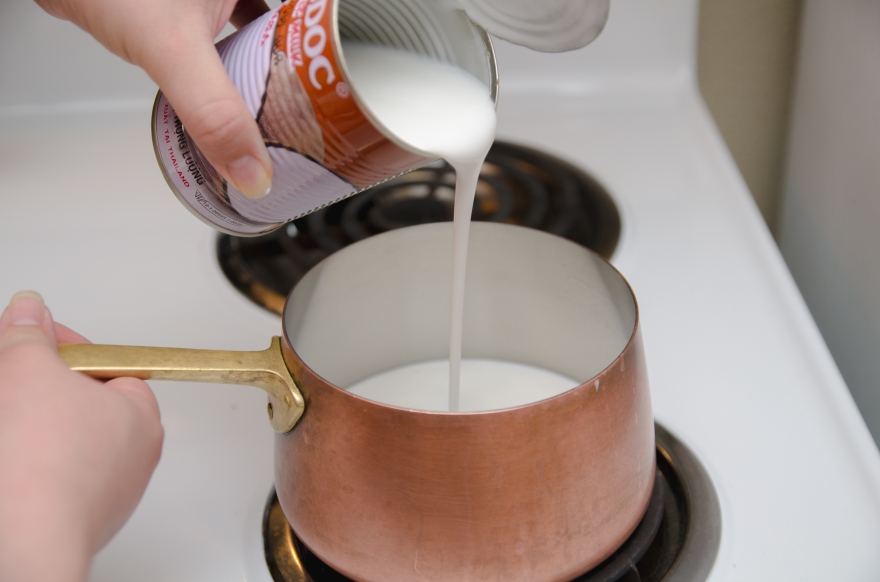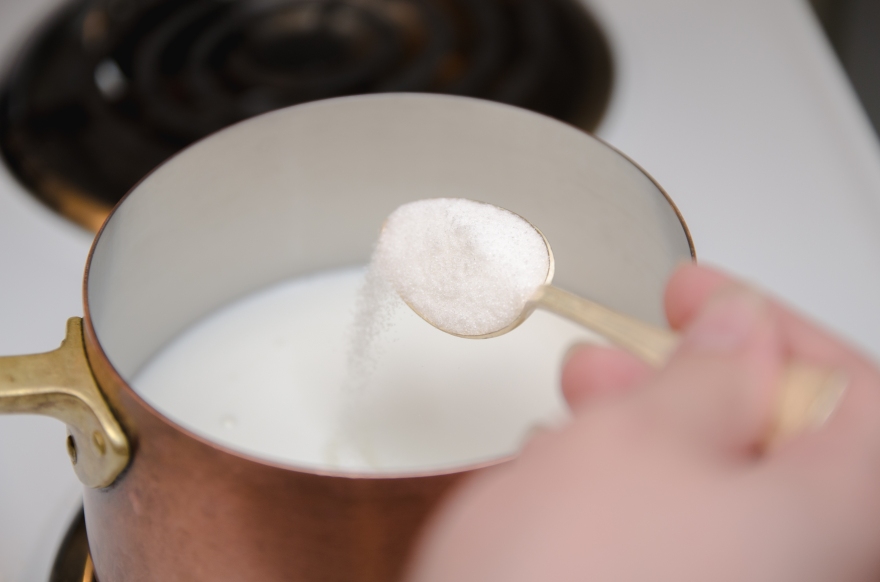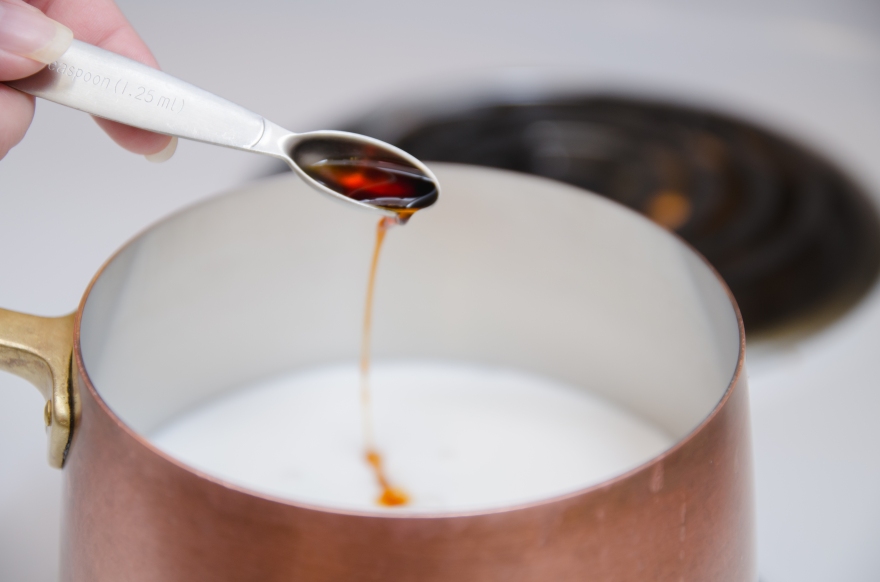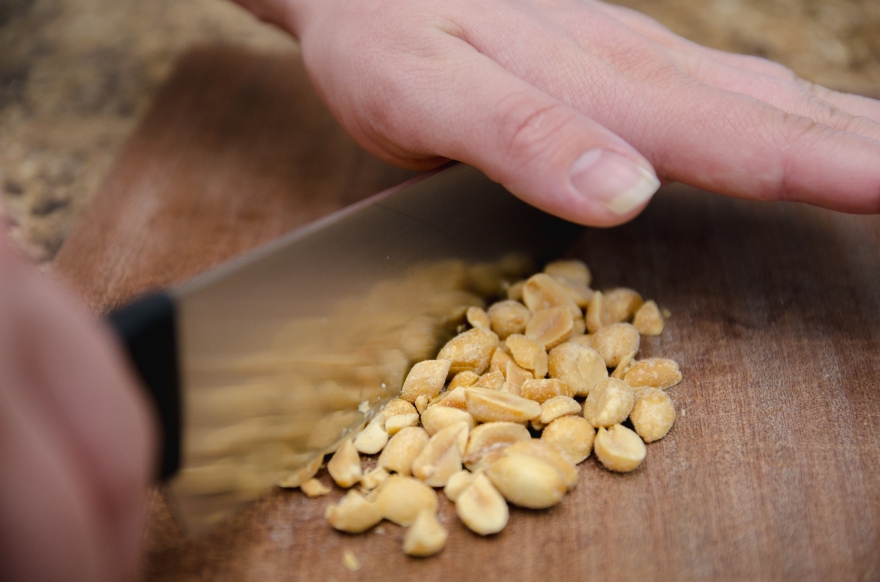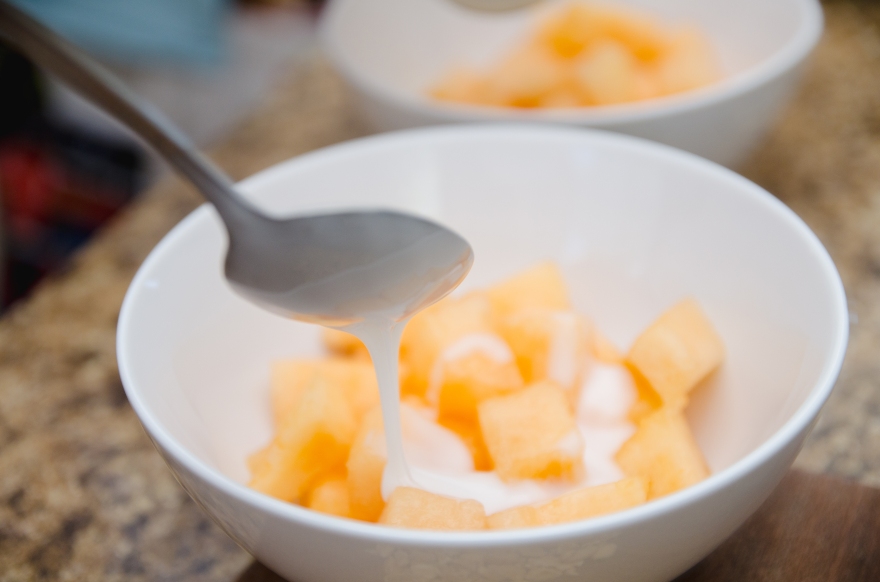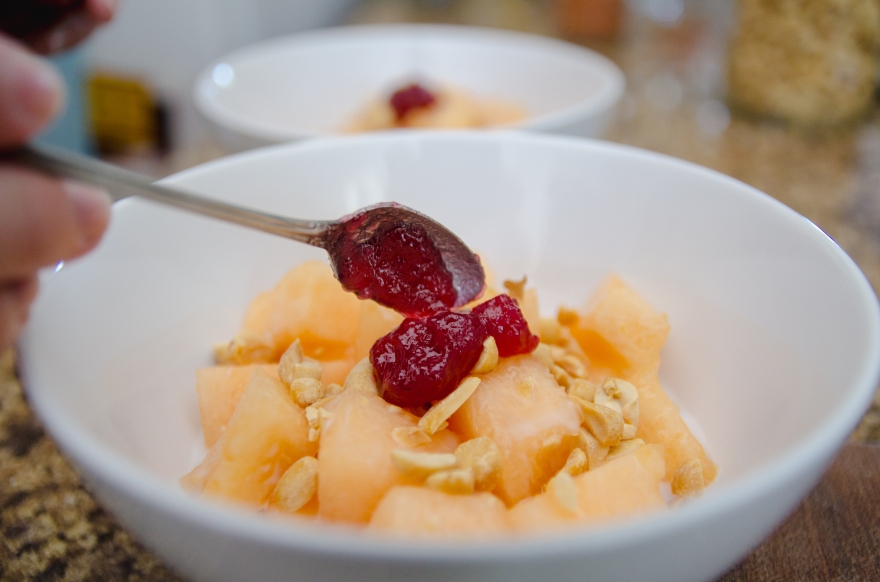My sister spent the summer in Copenhagen, and the souvenier/birthday present she brought me was a cookbook from Grød. My interest in food makes me easy to shop for, and, this being a somewhat more obscure and unique cookbook, I’m sure it practically called my name. Grød is a small specialty restaurant focused on porridge, which makes its cookbook a timely gift for the season. What I like most about it however is its creativity, especially for what is essentially a type of dish that is already a mainstay here: Buddha Bowls. If Grød were looking to set up shop in the States, it would be right at home in Eugene.
The idea behind this gift was it would be nice for the increasingly cool weather, but as you can see from the title, it ended up inspiring a very summery dessert. It was right around my birthday that our CSA melons finally appeared, and my husband and I merely split them in half and went at them with a spoon. The most recent farmshare’s melon was spared though while I had tarragon sugar rolling around in the back of my mind.
One of the aspects of Grød’s recipes that struck me most was how adaptable they could be to Oregon and Pacific Northwest flavors. The closest they came on their own was a rice porridge topped with hazelnuts, pear, and tarragon sugar. Tarragon doesn’t get the love that it should and I’ve been trying to rectify that ever since I first opened my homemade tarragon vinegar. But aside from chicken salad and bearnaise, I was at a loss until that appeared. If tarragon sugar was good with pear, then why couldn’t it be sprinkled on a fruit salad? And why not other herbs? Suddenly a whole world of herb sugars opened up to me. In fact, I had been so caught up with finishing salts all this time, I didn’t even think about finishing sugars.

Cantaloupe, or musk melon, seems to pair well with tarragon. But this sugar intensifies its flavor, so finding the right balance still requires some work. There’s also the issue of texture, as the sugar’s graininess isn’t quite the right contrast to melon’s softness. I think the sugar ought to be finer, so it melts easily, or more coarse, so it provides crunch. All things I’ll just have to experiment with…






